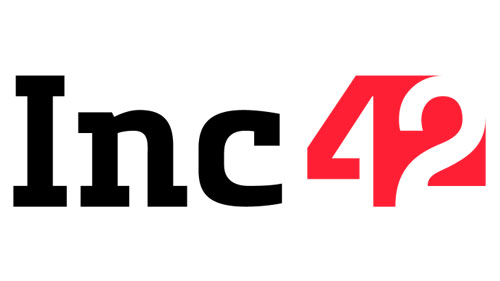Mumbai, Nov 15th – At the 14th Edition of the Sankalp Global Summit 2022 , one of the main plenary sessions was around the topic, ImpacTech Investing: Dichotomy or Paradigm shift?, led by Bikram Mahajan, Partner, Intellecap Investment Banking Group.


Inc42 in conversation with Bikram featured the story, “Why Venture Capitalists are doubling down on the Impactech sectors” which takes that conversation ahead and highlights how when it comes to investment themes, impact and technology have always been discrete buckets for investors. Bikram also opines on how the belief that VC investing is primarily driven by financial objectives whereas impact investing is only about seeking people and planet outcomes has led to such misconception, and the truth about how impact and technology have never been two unrelated paradigms. Both styles of investing are deeply intertwined and form a continuum rather than a dichotomy.
The Rise And Rise Of Impact & Tech Sectors
A decade ago, it was easy to dismiss the impact sector as a collection of not-for-profit organisations supported by foundations and philanthropies. We’ve come a long way since then, and the for-profit impact sector is now formally recognised around the world, and impact investing is a well-defined asset class.
The global impact AUM crossed $1 Tn across asset classes in 2022. This impact AUM is managed by 3,349 organisations, where fund managers account for the majority of them. Concurrently, the startup sector observed $134 Bn invested in 5,200 startups since 2014 in India and a non-trivial $2.5 Tn in over 100,000 startups worldwide.
A new class of impact startups challenging the traditional impact business models also emerged during the last few years, piggybacking on disruptive innovation, an often quoted and generally accepted investment driver in the mainstream startup sector.
Equipped with state-of-the-art technology, impact startups exhibited the promise of accelerated growth translating into superior impact and investment multiples than their traditional impact counterparts.
A few impact investors also broadened their investment themes to join the bandwagon of investing in technology startups, even considering impact in retrospect on occasion, and a few startups that were ignored by mainstream VC funds went to the extreme of impact washing to seek impact pools of capital.
The Impact Vs. Tech Dichotomy
With 107 unicorns and one of the world’s highest unicorn minting velocities, India has only 11 impact unicorns, with no unicorns in sectors such as agritech or cleantech.
One could argue that asset managers have made unprecedented commitments to impact AUM allocation, fueling its 11% growth since 2016. However, the private markets AUM grew from $5.2 Tn in 2016 to $9.8 Tn in 2021 during the same period at a CAGR of 16%.
The gap widens when we consider that the $4.2 Tn funding required to achieve 17 Sustainable Development Goals by 2030 is just 1.1% of assets held by financial institutions.
The predicament intensifies when we combine this statistic with a survey by JP Morgan and GIIN, which found that over 55% of impact funds deliver at least market rate returns, as well as a study by MSCI, Inc. validating the stylised fact that companies with higher ESG ratings have higher profitability, lower systematic risk and lower tail risk.
Impactech Investing: A New Paradigm
From the perspective of an investor, one way to resolve this seemingly obvious conundrum is to recognise “impact” as an investment approach conspicuously integrated into a fund manager’s investment thesis rather than an asset class. Impact investing, according to the Global Impact Investing Network (GIIN), necessitates intentionality and impact measurement.
Using this globally accepted definition, Intellecap’s digital investment banking team estimated that 40% of the world’s 1,200 unicorns can be classified as Impactech startups.
The truth is impact and technology have never been two unrelated paradigms. Both styles of investing are deeply intertwined and form a continuum rather than a dichotomy. The global ESG transition being extensively embraced by tech giants, unicorns and investors across asset classes demonstrates this phenomenon.
For a startup, impactech is often misconstrued as reluctantly espousing backward fitting impact metrics as an after-thought for enhancing investment worthiness or employing emerging technologies one-dimensionally to deliver impact. Scaling up is an inherent objective of every venture, whether digital or impact, intending to solve a grand challenge.
Impactech is about designing business models from the ground up which leverage both technology and impact as sustainable competitive advantages to achieve scale. The next 3 Bn presents the largest underpenetrated market for digital businesses, whereas impact ventures are transforming their business models for scalability through digital inclusion.
Hence, impactech comprises not only a healthcare company employing technology as an enabler for scale and efficiency but also a deeptech startup exploiting big data and AI/ML to digitise and interpret diagnostic reports.
Analogously, not all edtech startups can be classified as impact and not all enterprisetech startups are non-impact. Perhaps the correct approach is to evaluate each startup with intentionality and a measurement lens, rather than defining impactech as an all-encompassing sector.
The impactech dimension has always been ingrained in the investment thesis across strategies, sectors, and stages. Reclassifying impactech as a distinct and broad-based investment theme would simplify investments at the intersection of impact and technology to empower digital businesses that solve global challenges.




